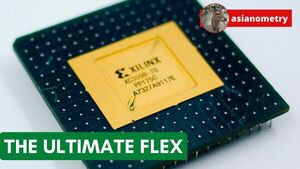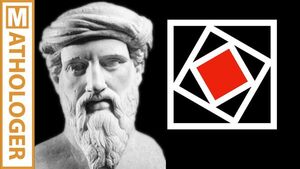2022-10-27 - Nº 391
Editorial
Esta é a Newsletter Nº 391 que se apresenta com o mesmo formato que as anteriores. Se gostar da Newsletter partilhe-a!
Todas as Newsletters encontram-se indexadas no link.
Esta Newsletter tem os seguintes tópicos:
Faz hoje anos que nascia, em 1806, o inventor norte-americano Isaac Merrit Singer. Ele inventou uma máquina de costura prática. Enquanto actor, inventou uma escavadora (1839) e um escultor de madeira (1849), antes de se tornar mecânico itinerante e de melhorar a máquina de costura. A sua primeira patente de máquina de costura, emitida a 12 de Agosto de 1851 (U.S. No. 8294), tinha um desenho de banda de rodagem, alimentação contínua, e uma agulha reta e vertical como as máquinas modernas. Chegou a acordo com Elias Howe por violação da sua anterior (1846) patente de máquina de costura. A empresa então fundada por Singer (1856) foi, dentro da década, o maior fabricante mundial de máquinas de costura. A sua maior invenção foi uma nova forma de marketing para os consumidores. Gastou generosamente em publicidade, foi pioneiro na compra a preços acessíveis por crédito a prestações, e prestou serviço pós-venda. Em 1863, reformou-se, com mais 12 patentes sobre as suas máquinas.
Faz também hoje anos que nascia, em 1864, o inventor e fabricante norte-americano John M. Mack. Ele co-fundou a Mack Brothers Company (1902), que se tornou Mack Trucks Inc. (1922), fabricantes de camiões pesados resistentes. Em 1890, começou a trabalhar para uma empresa que fabricava carruagens e vagões em Nova Iorque, que comprou posteriormente (1893) e dirigiu com os seus irmãos. Por volta de 1900, os irmãos Mack produziram o seu primeiro grande veículo de sucesso, um autocarro de 40 cv com capacidade para 20 passageiros, chamado Manhattan. Construíram mais autocarros, e em 1905, expandiram-se para a fabricação de camiões, com cerca de 100 trabalhadores. Em 1910, Mack produziu o primeiro camião motorizado de gancho e bexiga para bombeiros. John inventou o motor do tipo Mack "Bulldog". O bulldog continua a ser o ícone da empresa actual e parte do seu logótipo.
Por fim, faz hoje anos que nascia, em 1940, o inventor russo Dmitri Z. Garbuzov. Ele foi um dos pioneiros e inventores dos lasers de díodos de funcionamento contínuo a temperatura ambiente e dos lasers de díodos de alta potência. Os primeiros lasers de díodos de onda contínua de temperatura ambiente foram inventados, desenvolvidos e quase simultaneamente demonstrados no Instituto Físico-Técnico Ioffe em Leningrado, Rússia, por uma equipa que inclui Garbuzov e Zhores Alferov (vencedor do Prémio Nobel da Física de 2000), e pela equipa concorrente de I. Hayashi e M. Panish nos Laboratórios Bell Telephone em Murray Hill, Nova Jersey. Ambas as equipas alcançaram este feito em 1970. Garbuzov foi também responsável pelo desenvolvimento de lasers de diodo práticos de alta potência e alta eficiência numa variedade de bandas de comprimento de onda, desde comprimentos de onda visíveis até comprimentos de onda de infravermelhos médios.
Em 1904, o primeiro sistema ferroviário subterrâneo e subaquático nos EUA, o metro da cidade de Nova Iorque, começou a funcionar. Mesmo com linhas férreas elevadas a surgir em torno da cidade, a necessidade de um metropolitano de trânsito rápido era óbvia para descongestionar as ruas e espalhar o desenvolvimento da cidade para as áreas periféricas. Quase 8.000 homens participaram na construção do traçado dos 3,6 km, sob o comando do engenheiro-chefe, William Barclay Parsons. A construção do metro foi uma tarefa complexa e perigosa; pelo menos 44 pessoas morreram no esforço: Este primeiro metro de trânsito rápido, o IRT (Interborough Rapid Transit), foi inaugurado em Nova Iorque pelo Presidente da Câmara McLellan. O preço do metro e do autocarro foi fixado em um níquel.
Na Newsletter desta semana apresentamos diversas noticias, artigos científicos, projetos de maker e alguns vídeos interessantes. É apresentada a revistar MagPI Magazine nº 123 de Novembro.
 João Alves ([email protected])
João Alves ([email protected])
O conteúdo da Newsletter encontra-se sob a licença  Creative Commons Attribution-NonCommercial-ShareAlike 4.0 International License.
Creative Commons Attribution-NonCommercial-ShareAlike 4.0 International License.
Novidades da Semana
Outras Notícias
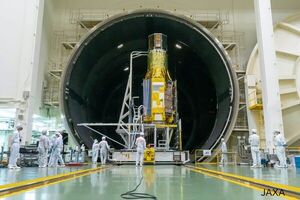
As XRISM Prepares To Launch, What Might The Telescope Reveal About The Largest Structures In Our Universe?
"“As something falls from a high position to a low position, it gains kinetic energy by losing gravitational potential.” It is a sentence that could belong in any physics textbook. But Associate Professor Yamaguchi Hiroya is not discussing the quintessential student problem of dropping an object into a well. Instead, he is describing the formation of the largest structures in the Universe: galaxy clusters. The activity within these cosmological monoliths have long remained unclear, but this is set to change with the launch of the XRISM X-ray Space Observatory next fiscal year. Shortly after the birth of the Universe, all matter was spread nearly homogeneously throughout space. But tiny variations in the distribution created pockets of slightly higher mass, and these exerted a gravitational tug on their surroundings that drew in more matter." [...]
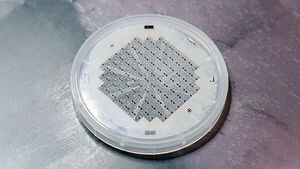
NXP and German Aerospace Center DLR Collaborate on Quantum Computing Technologies in Germany
"NXP Semiconductors (NASDAQ: NXPI) today announced its collaboration with the German Aerospace Center (DLR) and other partners on ion trap-based quantum computers as part of the DLR’s Quantum Computing Initiative. The initiative aims to build quantum computers to help enable new innovations across energy, automotive, government, aerospace and other critical infrastructure. Quantum computers can process data significantly faster than classical computers, allowing them to solve complex problems that can help society in many ways, including weather and climate model calculations, accelerated development of medications and vaccines, improved model calculations for mobility and logistics, cyber security protection and many more. While these complex machines are rapidly evolving, they remain challenging to build, require deep levels of expertise and a path towards industrialization must be further developed. To help achieve these new innovations, NXP is collaborating with recognized leaders in the field of quantum computing. Together with eleQtron, ParityQC, QUDORA Technologies and the Technical University of Hamburg, NXP will pool expertise from across the industry to enable rapid advances in quantum computing and help roll out scalable and marketable solutions in the near future." [...]

Smart Metering Platform Available on 32-bit MCU Product Family Equipped with an MPL460 PLC Modem
"Microchip’s PIC32CXMT provides maximum flexibility with three tiered devices including a single core, dual core and system-on-chip (SOC) to streamline smart meter and communications infrastructure development. The design complexity of smart meters continues to evolve as different communications solutions are integrated into the framework and as regulatory compliance requirements are mandated. To meet the growing demand for a feature-rich yet simple design solution for developing smart meters, Microchip Technology Inc. (Nasdaq: MCHP) today announces the PIC32CXMT family of 32-bit microprocessors with a new MPL460 Power Line Communication (PLC) modem. The new suite of MCU devices is a next-generation smart metering platform targeting industrial IoT, commercial and industrial metering applications. The platform boasts increased performance with up to 200 MHz operation and broad scalability with up to 560 KB of memory (SRAM). To provide developers with optimal flexibility to scale their products, the PIC32CXMT family is offered in three variants based on a single Arm® Cortex®-M4F core, a dual Arm Cortex-M4 core and a system-on-chip (SoC) device." [...]

onsemi Redefines Brushless DC Motor Control with ecoSpin Family
"With an embedded gate driver and a microcontroller engine, ecoSpin™ BLDC motor control solutions provide reliable, scalable operation up to 600V onsemi (Nasdaq: ON), a leader in intelligent power and sensing technologies, today introduced its new ecoSpin™ family of brushless DC (BLDC) motor controllers. By combining the control and driver functions in a complete system-in-package (SiP) solution, onsemi simplifies the development of high-voltage motor control systems in applications such as HVAC, refrigeration and robotics. The first member of the ecoSpin family to be launched is the ECS640A, a three-phase brushless DC (BLDC) motor controller designed for reliable high-voltage operation up to 600 V. The small-form-factor ECS640A features a trusted gate driver, Arm® Cortex-M0+ microcontroller, three sense amplifiers, three bootstrap diodes and can support either sensored or sensorless motor control architectures. “The highly integrated solution reduces time to market by eliminating the need for design cycles on applications, simplifying solution reuse when scaling BLDC motor power level requirements,” said Michel De Mey, vice president of the Industrial Solutions Division, onsemi. “Reliability is improved by replacing many of the larger, more complex devices, while at the same time shrinking the PCB routing area by approximately 20% compared to a discrete implementation, to deliver an overall compact solution.” The integration in a single IC package (10 by 13 mm) redefines BLDC motor control performance by optimizing power stage placement and reducing noise. This allows rapid reuse in alternative platforms by simply changing the discrete power devices and updating the software." [...]
Ciência e Tecnologia
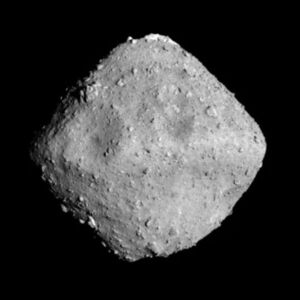
A traveler from the edge of the Solar System
"Iron isotopes in samples from asteroid Ryugu suggest its origin to lie beyond the orbits of Jupiter and Saturn Astronomy Astrophysics Solar System The asteroid Ryugu likely formed at the outer edge of the Solar System beyond the orbits of Jupiter and Saturn, as high-precision measurements that determine the ratio of iron isotopes in rock samples from Ryugu suggest. The Japanese space probe Hayabusa 2 had taken the samples and brought them back to Earth two years ago. An international group of researchers with participation of the Max Planck Institute for Solar System Research (MPS) in Göttingen and the Georg-August-University Göttingen describes these results in today’s issue of the journal Science Advances. According to their findings, Ryugu's “list of ingredients” differs significantly from that of typical carbon-rich meteorites in one crucial point. Instead, everything indicates a close kinship to a rare group of meteorites that is likewise associated to the outer Solar System. The study is one of three publications that the journals Science and Science Advances today dedicate to asteroid Ryugu." [...]
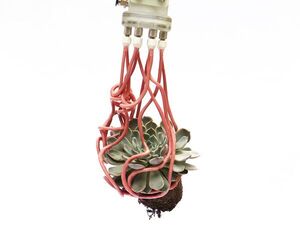
Tentacle robot can gently grasp fragile objects
"Jellyfish-like soft gripper mimics the mechanics of curly hair If you’ve ever played the claw game at an arcade, you know how hard it is to grab and hold onto objects using robotics grippers. Imagine how much more nerve-wracking that game would be if, instead of plush stuffed animals, you were trying to grab a fragile piece of endangered coral or a priceless artifact from a sunken ship. Most of today’s robotic grippers rely on embedded sensors, complex feedback loops, or advanced machine learning algorithms, combined with the skill of the operator, to grasp fragile or irregularly shaped objects. But researchers from the Harvard John A. Paulson School of Engineering and Applied Sciences (SEAS) have demonstrated an easier way. Taking inspiration from nature, they designed a new type of soft, robotic gripper that uses a collection of thin tentacles to entangle and ensnare objects, similar to how jellyfish collect stunned prey. Alone, individual tentacles, or filaments, are weak." [...]
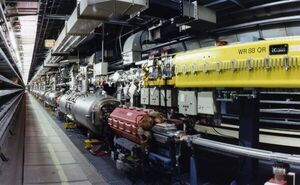
How Do You Solve a Problem Like a Proton? You Smash It to Smithereens – Then Build It Back Together With Machine Learning
"New tool decodes proton snapshots captured by history-making particle detector in record time Protons are tiny yet they carry a lot of heft. They inhabit the center of every atom in the universe and play a critical role in one of the strongest forces in Nature. And yet, protons have a down-to-earth side, too. Like most particles, protons have spin that act like tiny magnets. Flipping a proton’s spin or polarity may sound like science fiction, but it is the basis of technological breakthroughs that have become essential to our daily lives, such as magnetic resonance imaging (MRI), the invaluable medical diagnostics tool. Despite such advancements, the proton’s inner workings remain a mystery." [...]
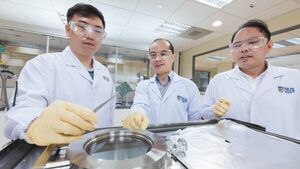
NUS researchers devise revolutionary technique to generate hydrogen more efficiently from water
"A team of researchers from the National University of Singapore (NUS) have made a serendipitous scientific discovery that could potentially revolutionise the way water is broken down to release hydrogen gas - an element crucial to many industrial processes. The team, led by Associate Professor Xue Jun Min, Dr Wang Xiaopeng and Dr Vincent Lee Wee Siang from the Department of Materials Science and Engineering under the NUS College of Design and Engineering (NUS CDE), found that light can trigger a new mechanism in a catalytic material used extensively in water electrolysis, where water is broken down into hydrogen and oxygen. The result is a more energy-efficient method of obtaining hydrogen. This breakthrough was achieved in collaboration with Dr Xi Shibo from the Institute of Sustainability for Chemicals, Energy and Environment under the Agency for Science, Technology and Research (A*STAR); Dr Yu Zhigen from the Institute of High Performance Computing under A*STAR; and Dr Wang Hao from the Department of Mechanical Engineering under the NUS CDE. “We discovered that the redox center for electro-catalytic reaction is switched between metal and oxygen, triggered by light,” said Assoc Prof Xue. “This largely improves the water electrolysis efficiency.” The new finding can potentially open up new and more effective industrial methods of producing hydrogen and putting this environmentally friendly source of fuel within the reach of more people and industries." [...]
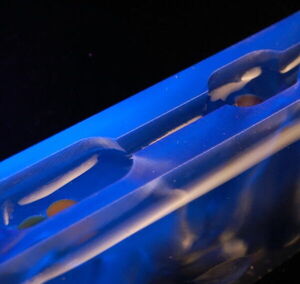
Simple machine may pave the way for more powerful cell phones and WIFI
"A 3D-printed device in a tank of water braids nanowires and moves microparticles. The next generation of phones and wireless devices are going to need new antennae to access higher and higher frequency ranges. One way to make antennae that work at tens of gigahertz — the frequencies needed for 5G and higher devices — is to braid filaments about 1 micrometer in diameter. But today’s industrial fabrication techniques won’t work on fibers that small. Now a team of researchers from the Harvard John A. Paulson School of Engineering and Applied Sciences (SEAS) has developed a simple machine that uses the surface tension of water to grab and manipulate microscopic objects, offering a potentially powerful tool for nanoscopic manufacturing. The research is published in Nature." [...]

Tapping into seawater's energetic potential
"Clean hydrogen fuel is easier to produce from seawater with stable hierarchical electrocatalysts. Oct 26, 2022 Seawater, which comprises more than 95 percent of the Earth’s water, could become a key resource in the sustainable production of clean hydrogen fuel with use of water-splitting catalysts developed by a KAUST-led team. Water splitting could offer an appealing way to carbon neutrality, especially when coupled with renewable energy sources such as solar and wind power. Water splitting involves the breakdown of water in an electrochemical cell to produce hydrogen at the cathode while generating oxygen at the anode under applied voltage. Yet, hydrogen and oxygen evolution catalysts that perform well in fresh water become less effective in seawater because of abundant ions that can promote unwanted reactions and poison catalysts. Highly corrosive chloride ions present in seawater undergo complex reactions that compete with oxygen evolution and generate harmful compounds, such as hypochlorite." [...]
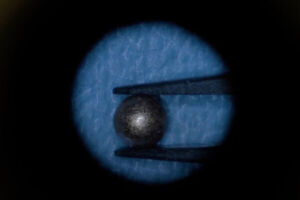
Magnetic sensors track muscle length
"Using a new technology, researchers hope to create better control systems for prosthetic limbs. Using a simple set of magnets, MIT researchers have come up with a sophisticated way to monitor muscle movements, which they hope will make it easier for people with amputations to control their prosthetic limbs. In a new pair of papers, the researchers demonstrated the accuracy and safety of their magnet-based system, which can track the length of muscles during movement. The studies, performed in animals, offer hope that this strategy could be used to help people with prosthetic devices control them in a way that more closely mimics natural limb movement. “These recent results demonstrate that this tool can be used outside the lab to track muscle movement during natural activity, and they also suggest that the magnetic implants are stable and biocompatible and that they don’t cause discomfort,” says Cameron Taylor, an MIT research scientist and co-lead author of both papers. In one of the studies, the researchers showed that they could accurately measure the lengths of turkeys’ calf muscles as the birds ran, jumped, and performed other natural movements." [...]
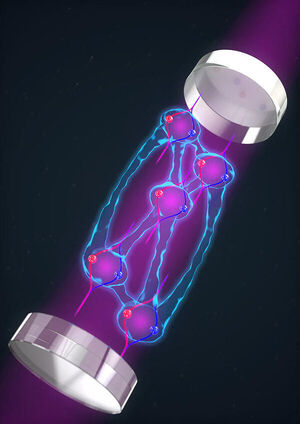
An Entangled Matter-Wave Interferometer: Now With Double the Spookiness!
"JILA and NIST Fellow James K. Thompson’s team of researchers have for the first time successfully combined two of the “spookiest” features of quantum mechanics to make a better quantum sensor: entanglement between atoms and delocalization of atoms. Einstein originally referred to entanglement as creating spooky action at a distance—the strange effect of quantum mechanics in which what happens to one atom somehow influences another atom somewhere else. Entanglement is at the heart of hoped-for quantum computers, quantum simulators and quantum sensors. A second rather spooky aspect of quantum mechanics is delocalization, the fact that a single atom can be in more than one place at the same time. As described in their paper recently published in Nature, the Thompson group has combined the spookiness of both entanglement and delocalization to realize a matter-wave interferometer that can sense accelerations with a precision that surpasses the standard quantum limit (a limit on the accuracy of an experimental measurement at a quantum level) for the first time. By doubling down on the spookiness, future quantum sensors will be able to provide more precise navigation, explore for needed natural resources, more precisely determine fundamental constants such as the fine structure and gravitational constants, look more precisely for dark matter, or maybe even one day detect gravitational waves." [...]

A faster experiment to find and study topological materials
"Using machine learning and simple X-ray spectra, researchers can uncover compounds that might enable next-generation computer chips or quantum devices. Topological materials, an exotic class of materials whose surfaces exhibit different electrical or functional properties than their interiors, have been a hot area of research since their experimental realization in 2007 — a finding that sparked further research and precipitated a Nobel Prize in Physics in 2016. These materials are thought to have great potential in a variety of fields, and might someday be used in ultraefficient electronic or optical devices, or key components of quantum computers. But there are many thousands of compounds that may theoretically have topological characteristics, and synthesizing and testing even one such material to determine its topological properties can take months of experiments and analysis. Now a team of researchers at MIT and elsewhere have come up with a new approach that can rapidly screen candidate materials and determine with more than 90 percent accuracy whether they are topological. Using this new method, the researchers have produced a list candidate materials." [...]
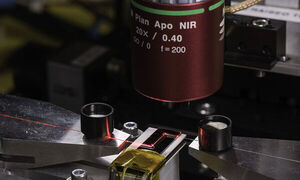
A laser that could ‘reshape the landscape of integrated photonics’
"Rochester researchers see applications in LiDAR, atomic physics, AR/VR. How do you integrate the advantages of a benchtop laser that fills a room onto a semiconductor chip the size of a fingernail? A research team co-led by Qiang Lin, a professor of electrical and computer engineering at the University of Rochester, has set new milestones in addressing this challenge, with the first multi-color integrated Pockels laser that: Emits high-coherence light at telecommunication wavelengths Allows laser-frequency tuning at record speeds Is the first narrow linewidth laser with fast configurability at the visible band The project, described in Nature Communications, was co-led by John Bowers, distinguished professor at University of California/Santa Barbara, and Kerry Vahala, professor at the California Institute of Technology. Lin Zhu, professor at Clemson University, also collaborated on the project. The technology “has the potential to reshape the landscape of integrated photonics,” write co-lead authors Mingxiao Li, a former PhD student in Lin’s Laboratory for Nanophotonics at Rochester’s Hajim School of Engineering & Applied Sciences, and Lin Chang, a former postdoctoral student at University of California/Santa Barbara. It will pave the way for new applications of integrated semiconductor lasers in LiDAR (Light Detection and Ranging) remote sensing that is used, for example, in self-driving cars." [...]
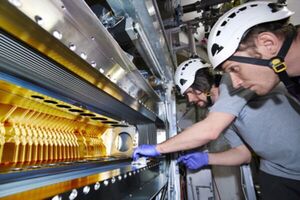
Large Hadron Collider achieves project milestone
"The Large Hadron Collider (LHC) has successfully approached a proton collision point for the first time since its three-year refurbishment. The successful implementation of the new Vertex Locator (VELO), which was partly built in Manchester offers a greater collision rate of protons and efficiency. The process is called “VELO closing” in the LHCb jargon. The LHC has recently started its third running period after a three-year long shutdown. In this period, one of the four major experiments, LHCb, has been upgraded with new detectors and a new readout system to be able to operate with a five times greater collision rate and with improved data selection efficiency. The experiment, which is lead by Professor Chris Parkes of The University of Manchester, has reached a major milestone today." [...]

New approach to ‘cosmic magnet’ manufacturing could reduce reliance on rare earths in low-carbon technologies
"Researchers have discovered a potential new method for making the high-performance magnets used in wind turbines and electric cars without the need for rare earth elements, which are almost exclusively sourced in China. A team from the University of Cambridge, working with colleagues from Austria, found a new way to make a possible replacement for rare-earth magnets: tetrataenite, a ‘cosmic magnet’ that takes millions of years to develop naturally in meteorites. Previous attempts to make tetrataenite in the laboratory have relied on impractical, extreme methods. But the addition of a common element – phosphorus – could mean that it’s possible to make tetrataenite artificially and at scale, without any specialised treatment or expensive techniques. The results are reported in the journal Advanced Science. A patent application on the technology has been filed by Cambridge Enterprise, the University’s commercialisation arm, and the Austrian Academy of Sciences." [...]
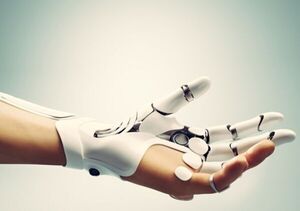
Engineers light the way to bionics of the future
"A multi-disciplinary team at UNSW has found a way to convert nerve impulses into light, opening the way for more scalable neural implants. Biomedical and electrical engineers at UNSW Sydney have developed a new way to measure neural activity using light – rather than electricity – which could lead to a complete reimagining of medical technologies like nerve-operated prosthetics and brain-machine interfaces. Professor François Ladouceur, with UNSW’s School of Electrical Engineering and Telecommunications, says the multi-disciplinary team has just demonstrated in the lab what it proved theoretically shortly before the pandemic: that sensors built using liquid crystal and integrated optics technologies – dubbed ‘optrodes’ – can register nerve impulses in a living animal body. Not only do these optrodes perform just as well as conventional electrodes – that use electricity to detect a nerve impulse – but they also address “very thorny issues that competing technologies cannot address”, says Prof. Ladouceur. “Firstly, it’s very difficult to shrink the size of the interface using conventional electrodes so that thousands of them can connect to thousands of nerves within a very small area. “One of the problems as you shrink thousands of electrodes and put them ever closer together to connect to the biological tissues is that their individual resistance increases, which degrades the signal-to-noise ratio so we have a problem reading the signal." [...]
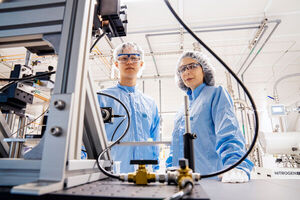
Building with nanoparticles, from the bottom up
"Researchers develop a technique for precisely arranging nanoscale particles on a surface, such as a silicon chip, that doesn’t damage the material. Researchers at MIT have developed a technique for precisely controlling the arrangement and placement of nanoparticles on a material, like the silicon used for computer chips, in a way that does not damage or contaminate the surface of the material. The technique, which combines chemistry and directed assembly processes with conventional fabrication techniques, enables the efficient formation of high-resolution, nanoscale features integrated with nanoparticles for devices like sensors, lasers, and LEDs, which could boost their performance. Transistors and other nanoscale devices are typically fabricated from the top down — materials are etched away to reach the desired arrangement of nanostructures. But creating the smallest nanostructures, which can enable the highest performance and new functionalities, requires expensive equipment and remains difficult to do at scale and with the desired resolution. A more precise way to assemble nanoscale devices is from the bottom up." [...]
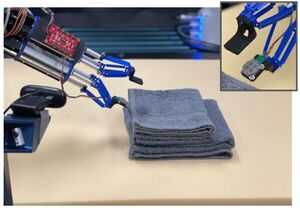
Robots That Can Feel Cloth Layers May One Day Help With Laundry
"New research from Carnegie Mellon University's Robotics Institute (RI) can help robots feel layers of cloth rather than relying on computer vision tools to only see it. The work could allow robots to assist people with household tasks like folding laundry. Humans use their senses of sight and touch to grab a glass or pick up a piece of cloth. It is so routine that little thought goes into it. For robots, however, these tasks are extremely difficult. The amount of data gathered through touch is hard to quantify and the sense has been hard to simulate in robotics — until recently." [...]
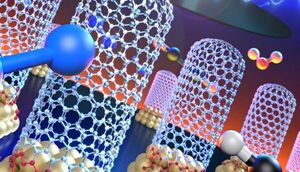
From batteries to water purifiers, carbon nanotubes are where it’s at
"Lawrence Livermore National Laboratory (LLNL) scientists are scaling up the production of vertically aligned single-walled carbon nanotubes (SWCNT) that could revolutionize diverse commercial products ranging from rechargeable batteries, automotive parts and sporting goods to boat hulls and water filters. The research appears in the journal Carbon. Most CNT production today is used in bulk composite materials and thin films, which rely on unorganized CNT architectures. For many uses, organized CNT architectures such as vertically aligned forests provide important advantages for exploiting the properties of individual CNTs in macroscopic systems. “Robust synthesis of vertically-aligned carbon nanotubes at large scale is required to accelerate deployment of numerous cutting-edge devices to emerging commercial applications," said LLNL scientist and lead author Francesco Fornasiero. “To address this need, we demonstrated that the structural characteristics of single-walled CNTs produced at wafer scale in a growth regime dominated by bulk diffusion of the gaseous carbon precursor are remarkably invariant over a broad range of process conditions.” The team found that the vertically oriented SWCNTs retained very high quality when increasing precursor concentration (the initial carbon) up to 30-fold, the catalyst substrate area from 1 cm2 to 180 cm2, growth pressure from 20 to 790 Mbar and gas flowrates up to 8-fold." [...]
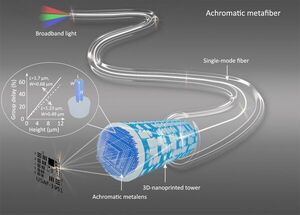
Precisely focused light: Compact and flexible fiber design ensures efficient focusing and razor-sharp images thanks to 3D printing
"An interdisciplinary team of researchers from Korea, Australia, Great Britain, and Germany – with participation of Leibniz Institute of Photonic Technology (Leibniz IPHT) – were able for the first time to optimize an optical glass fiber in such a way that light of different wavelengths can be focused extremely precisely. The level of accuracy is achieved by 3D nanoprinting of an optical lens applied to the end of the fiber. This opens up new possibilities for applications in microscopy and endoscopy as well as in laser therapy and sensor technology. The researchers published their results in the journal Nature Communications. Lenses at the end faces of optical fibers currently used in endoscopy for medical diagnostics have the disadvantage of chromatic aberration. This imaging error of optics, caused by the fact that light of different wavelengths, i. e. different spectral colors, is shaped and refracted differently, leads to a shift in the focal point and thus to blurring in imaging over a wide range of wavelengths." [...]

New data transmission record
"Using only a single light source, scientists have set a world record by transmitting 1.8 petabits per second. Their data transmission method uses significantly less power and can help reduce the Internet’s climate footprint. An international group of researchers from Technical University of Denmark (DTU) and Chalmers University of Technology in Gothenburg, Sweden have achieved dizzying data transmission speeds and are the first in the world to transmit more than 1 petabit per second (Pbit/s) using only a single laser and a single optical chip. 1 petabit corresponds to 1 million gigabits. In the experiment, the researchers succeeded in transmitting 1.8 Pbit/s, which corresponds to twice the total global Internet traffic. And only carried by the light from one optical source." [...]

Confining Classical And Quantum Waves With Crystals
"Manipulating elusive waves like light, sound or electrons, in periodic structures or crystals, has something mysterious. In the leading physics journal Physical Review Letters, published by the American Physical Society, a team of researchers from the University of Twente now describes how any kind of wave, whether quantum or classical, is confined in any kind of crystal. The results will notably boost efficient new integrated circuits that steer information encoded in tiny light pulses through smart cities. Waves represent an inseparable part of our everyday life, whether we listen to music, observe our reflection in a mirror, or experience the ocean rocking a sailing ship. A central challenge in manipulating waves for applications requires the ability to confine the waves in small regions in space. Scientists already know that it’s possible by deliberately introducing tailored deviations from perfect periodicity into the crystal." [...]
The Next Wonder Semiconductor
"With scanning ultrafast electron microscopy, researchers unveil promising hot photocarrier transport properties of cubic boron arsenide. In a study that confirms its promise as the next-generation semiconductor material, UC Santa Barbara researchers have directly visualized the photocarrier transport properties of cubic boron arsenide single crystals. “We were able to visualize how the charge moves in our sample,” said Bolin Liao, an assistant professor of mechanical engineering in the College of Engineering. Using the only scanning ultrafast electron microscopy (SUEM) setup in operation at a U.S. university, he and his team were able to make “movies” of the generation and transport processes of a photoexcited charge in this relatively little-studied III-V semiconductor material, which has recently been recognized as having extraordinary electrical and thermal properties. In the process, they found another, beneficial property that adds to the material’s potential as the next great semiconductor. Their research, conducted in collaboration with physics professor Zhifeng Ren’s group at the University of Houston, who specialize in fabricating high-quality single crystals of cubic boron arsenide, appears in the journal Matter." [...]
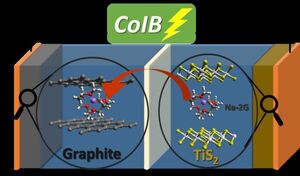
Batteries without critical raw materials
"The market for rechargeable batteries is growing rapidly, but the necessary raw materials are limited. Sodium-ion batteries, for example, could offer an alternative. A joint research group from HZB and Humboldt-Universität zu Berlin has investigated new combinations of electrolyte solutions and electrode materials for this purpose. "In contrast to lithium-ion batteries, which are based on the storage of lithium ions in the positive and negative electrodes of the battery, we are working on the one hand with sodium ions, as they also occur in cheap table salt. On the other hand, we store the sodium ions together with their solvate shell, i.e. solvent molecules from the electrolyte solution that separate the two electrodes." [...]

Rare Earth Elements Synthesis Confirmed in Neutron Star Mergers
"A group of researchers has, for the first time, identified rare earth elements produced by neutron star mergers. Details of this milestone were published in The Astrophysical Journal on October 26, 2022. When two neutron stars spiral inwards and merge, the resulting explosion produces a large amount of heavy elements that make up our Universe. The first confirmed example of this process was an event in 2017 named GW 170817. Yet, even five years later, identifying the specific elements created in neutron star mergers has eluded scientists, except for strontium identified in the optical spectra. A research group led by Nanae Domoto, a graduate student at the Graduate School of Science at Tohoku University and a research fellow at the Japan Society for the Promotion of Science (JSPS), has systematically studied the properties of all heavy elements to decode the spectra from neutron star mergers." [...]

New hybrid structures could pave the way to more stable quantum computers
"Study shows that merging topological insulators with a monolayer superconductor could support theorized topological superconductivity. A new way to combine two materials with special electrical properties — a monolayer superconductor and a topological insulator — provides the best platform to date to explore an unusual form of superconductivity called topological superconductivity. The combination could provide the basis for topological quantum computers that are more stable than their traditional counterparts. Superconductors — used in powerful magnets, digital circuits, and imaging devices — allow the electric current to pass without resistance, while topological insulators are thin films only a few atoms thick that restrict the movement of electrons to their edges, which can result in unique properties. A team led by researchers at Penn State describe how they have paired the two materials in a paper appearing Oct. 27 in the journal Nature Materials. “The future of quantum computing depends on a kind of material that we call a topological superconductor, which can be formed by combining a topological insulator with a superconductor, but the actual process of combining these two materials is challenging,” said Cui-Zu Chang, Henry W. Knerr Early Career Professor and Associate Professor of Physics at Penn State and leader of the research team." [...]
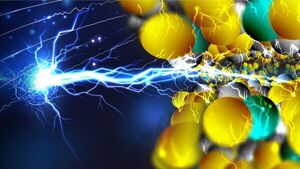
University of Chicago scientists discover material that can be made like a plastic but conducts like metal
"‘Like conductive Play-Doh’: Breakthrough could point way to new class of materials for electronics, devices Scientists with the University of Chicago have discovered a way to create a material that can be made like a plastic, but conducts electricity more like a metal. The research, published Oct. 26 in Nature, shows how to make a kind of material in which the molecular fragments are jumbled and disordered, but can still conduct electricity extremely well. This goes against all of the rules we know about for conductivity—to a scientist, it’s kind of seeing a car driving on water and still going 70 mph. But the finding could also be extraordinarily useful; if you want to invent something revolutionary, the process often first starts with discovering a completely new material. “In principle, this opens up the design of a whole new class of materials that conduct electricity, are easy to shape, and are very robust in everyday conditions,” said John Anderson, an associate professor of chemistry at the University of Chicago and the senior author on the study. “Essentially, it suggests new possibilities for an extremely important technological group of materials,” said Jiaze Xie (PhD’22, now at Princeton), the first author on the paper." [...]

"Grätzel" solar cells achieve a new record
"Scientists at EPFL have increased the power conversion efficiency of dye-sensitized solar cells ("Grätzel cells") beyond 15% in direct sunlight and 30% in ambient light conditions. Mesoscopic dye-sensitized solar cells (DSCs) were invented in 1990s by Brian O'Regan and Michael Grätzel, taking on the latter’s name – the world-famous Grätzel cells. DSCs convert light into electricity through photosensitizers – dye compounds that absorb light and inject electrons into an array of oxide nanocrystals which subsequently are collected as electric current. In DSCs, photosensitizers are attached (“adsorbed”) to the surface of nanocrystalline mesoporous titanium dioxide films that are imbibed with redox active electrolytes or a solid charge-transport material – the entire design aims to generate electric power by moving electrons from the photosensitizer towards an electrical output like a device or a storage unit. DSCs are transparent, can be fabricated in multiple colors for low cost, and are already being used in skylights, greenhouses, as well as glass facades, such as those adorning the SwissTech Convention Center. In addition, lightweight flexible versions of DSCs are now commercially sold on a large scale for electrical powering of portable electronic devices such as earphones and e-readers, as well in the Internet of Things by using ambient light." [...]
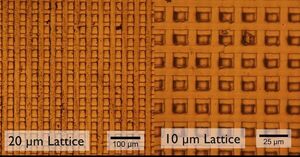
UvA grants license on fast 3D-printing with sub-micrometre detail
"Applications in tissue scaffolds for artificial organs, and functional devices The University of Amsterdam has reached a license agreement with the Gouda-based company atum3D on a method for fast, large-scale 3D-printing with sub-micron resolution. The method, developed at the university’s Van ‘t Hoff Institute for Molecular Sciences, combines photo- and stereo-lithography to produce high-resolution features at scale. Potential applications include tissue scaffolds for regenerative medicine, and devices for microfluidics and chromatography. When it comes to 3D-printing of large objects, current methods in general offer either high resolutions or high speed printing. The method now licensed to atum3D combines the two features in such a way that it offers opportunities in many areas ranging from tissue scaffolds to components for microfluidics and optics. It was invented by Dr Suhas Nawada, at the time a post-doctoral researcher at the Van ‘t Hoff Institute for Molecular Sciences." [...]
Documentação
A documentação é parte essencial do processo de aprendizagem e a Internet além de artigos interessantes de explorar também tem alguma documentação em formato PDF interessante de ler. Todos os links aqui apresentados são para conteúdo disponibilizado livremente pelo editor do livro.
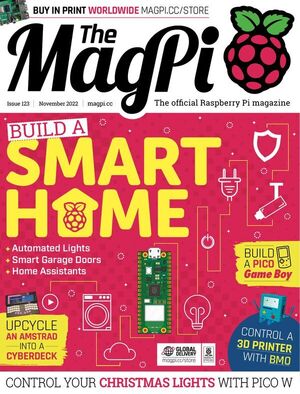
The MagPi 123
"Build your own smart home setup using Raspberry Pi Pico W in the latest edition of The MagPi magazine. Inside The MagPi magazine issue #123 - Build a smart home. Discover the best automation hardware and smart home projects. Then follow our in-depth home lighting tutorial. - Pico-powered Christmas lights. Upgrade your tree with stunning LEDs this holiday." [...]
Projetos Maker
Diversos Projetos interessantes.

5.1 channel analog audio processor
"This project is a 5.1-channel, analog audio processor based on PT2322 and Arduino Nano. In this project, we developed a 5.1-channel analog audio processor using PT2322 IC. PT2322 is an inexpensive analog audio processor introduced by Princeton Technology Corporation. It contains 6-channel individual channel attenuators, a 3-way tone control system for front-end speakers, and a 3D audio simulation system. In this design, we combine PT2322 with Arduino Nano and interface it with PC/embedded computing boards through a USB port. Native GTK UI application provides to control all functions of the PT2322 IC." [...]

Sleep environment monitor
"A sleep environment detector can be designed to give people feedback whether the current environment is suitable for sleeping Sleep environment monitor Sleep will have a great impact on people's work, life and health. The sleep condition of contemporary people will always have more or less problems. One of the important factors affecting sleep is sleep environment, among which the more important indicators are air temperature and humidity, carbon dioxide concentration, noise. Therefore, a sleep environment detector can be designed to give people feedback whether the current environment is suitable for sleeping by measuring air temperature and humidity, carbon dioxide concentration and noise value. Selection of materials: - Grove - VOC and eCO2 Gas Sensor (SGP30) - Grove - Temperature & Humidity Sensor V2.0 (DHT20) - Wio Terminal Feasibility assessment: Wio Terminal Built-in highly integrated design, LCD screen and compact shell, connect to Grove ecosystem, low deployment cost and difficulty, support Arduino IDE software platform, equipped with a powerful wiki library, suitable for small white people without code base to get started quickly, high feasibility. 1.Device selection and material collection Participant:Chunqiong Qiu Materials: - Grove - VOC and eCO2 Gas Sensor (SGP30) - Grove - Temperature & Humidity Sensor V2.0 (DHT11) - Wio Terminal" [...]
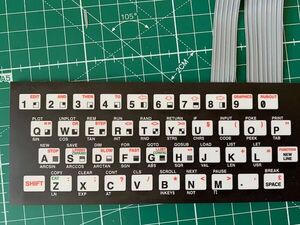
Read a ZX81 keyboard with Arduinos and build things with it
"Connect a ZX81 keyboard to an Arduino. This is a tutorial to quickly get the keyboard running and use if for all kinds of applications. The ZX81 was one of the iconic computers of the 80s. They made a computer with minimal hardware which still could do a lot of things. They came assembled or as do it yourself kit at a price of &69.95. Other home computers cost 5 times as much." [...]

DIY Solid State Relay module
"This is the solid state relay which is same as sugar cube relays available in market, These SSR based on electronics switching. Relays are the most useful and stable AC power switching components. Relays provide complete isolation of DC operating voltage from AC mains. The regular size of relays is big because of mechanical moving actuator and a coil. The coil forms an electromagnet which then used to attract the metal actuator points and thus turn on the AC power. The most popular relay SPDT (single pole double throw) has 5 terminals, 2 for the coil and 3 for the mains connections." [...]

Face-Following Carousel
"A carousel that automatically rotates to face the nearest person. Put a phone, fan, or anything you want to face at you on top! When I'm cooking or cleaning I'll often watch shows on my tablet, but I'll be moving around the kitchen and my hands are often full or dirty so I can't keep the display in view easily. I have a similar problem at my desk, where I have a fan that I'd like to keep pointing at my face as I type. With those situations in mind, I decided to create a stand that you can place an object on, and it will always rotate to face you. This project guide shows you how you can build one too, for around $50, with no soldering!" [...]

ATX Power Supply Panel
"A simple top mounted panel for re-using a discarded ATX computer power supply unit as lab bench power supply. Computer waste is a part of the increasing e-waste problem. If you have computer parts that are still operable, recycling parts such as an old ATX power supply helps to reduce the amount of e-waste and is a fun DIY project. You'll need : A 3D Printer to print out the Panel. An old ATX supply, 6 Banana-sockets (standard size for panel mount), switch, 2 standard 5V LEDs+330Ohm Resistors I used the outside wires from the long ATX connector which go to the banana terminals and did not need to open the case. I also left two 4-pin "P4 connectors" in case I want to connect any PC hardware (fans, drives etc) later." [...]
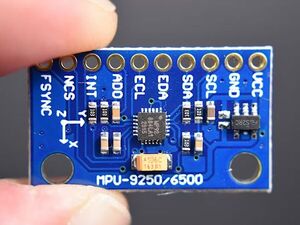
Complementary filter and relative orientation with MPU9250
"MPU-9250 is one of the most advanced combined accelerometer, gyroscope and compass small size sensors currently available. It replaces the popular MPU-9150 lowering the power consumption, improving gyro noise and compass full scale range performance. It has many advanced features, including low pass filtering, motion detection and even a programmable specialized processor. Internally it includes the MPU-6500, which contains a 3-axis gyroscope plus a 3-axis accelerometer, and the AK8963, the market leading 3-axis digital compass. The MPU-9250 uses 16-bit analog-to-digital converters (ADCs) for digitizing all 9 axes. The MPU-9250 is a high performance accelerometer, gyroscope and magnetometer option for use in applications such as gesture recognition, self-balancing robots, cell phones, fitness monitoring and similar applications where detection of movement direction and magnitude along with rotation is desired." [...]
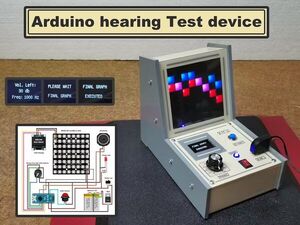
Arduino hearing test device - Audiometer
"An audiometer is a machine used for evaluating hearing acuity. An audiometer is a machine used for evaluating hearing acuity. They usually consist of an embedded hardware unit connected to a pair of headphones and a test subject feedback button. This device typically transmits pure tones to the headphones of the test subject at varying frequencies and intensities, and records the subject's responses to produce an audiogram of threshold sensitivity. I recently took a hearing test in a professional facility, and I received the results in the form of an audiogram. I decided to try to make a similar device because the principle of operation of the device is quite simple." [...]

Autonomous Arduino-weather station on two AA batteries
"A stunning result will be achieved - the battery life of the weather station is longer than that of similar industrial products. Introduction To begin with, I could not find an amateur weather station or a battery-powered thermostat on the Internet. I mean a simple household autonomous weather station with the measurement of parameters indoors, outdoors and displaying information on the display of the weather station. Hobbyists do not stop at this problem, but power their autonomous devices from solar panels or batteries. Since my surfing on the Internet did not give anything, I realized that this is not a simple problem and began to study it. To reduce the cost of goods, manufacturers of industrial autonomous devices compose programs taking into account the amount of memory where the codes of these programs are written." [...]
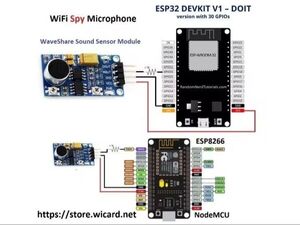
ESP WiFi Spy Microphone (ESP32 and ESP8266)
"I recently have updated “ESP WiFi Microphone” project to rev 1.3 and now the revision 1.4 is available which is stronger and more stable than rev 1.3. This project is compatible with both of ESP8266 and ESP32 modules and you can simply upload it on NodeMCU, ESP32 DEVKIT and other similar boards. In the latest revision I have increased the audio bit-rate of ESP32 up to 192Kbps and ESP8266 up to 110Kbps. ESP32 works in 16KHz sample rate with 12 bit resolution and ESP8266 works in 11KHz/10bit. Also there was a bug in secure link and I have fixed this bug too. " [...]

TinyML Package Monitor
"TinyML based Package detection for home usage With the emerging growth of online store popping out in a lot of countries, there are a lot of online customer ordering product via mail packages. Sometimes the customers are worried if the package have arrived safely or not at the front their house due too few problems such as package thief, lost package, confirmation status not corresponding with the real event, etc. Because of that problem I want to create an easy to make project and affordable solution. " [...]
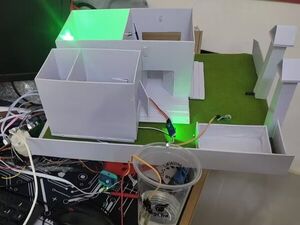
ESP32 Blynk FreeRTOS
"Project Smart home using ESP32 and blynk cloud. What is RTOS A real-time operating system (RTOS) is an operating system (OS) for real-time applications that processes data and events that have critically defined time constraints. An RTOS is distinct from a time sharing operating system, such as Unix, which manages the sharing of system resources with a scheduler, data buffers, or fixed task prioritization in a multitasking or multiprogramming environment. Processing time requirements need to be fully understood and bound rather than just kept as a minimum. All processing must occur within the defined constraints. Real-time operating systems are event-driven and preemptive, meaning the OS is capable of monitoring the relevant priority of completing tasks, and make changes to the task priority." [...]

DIY 4 channel Bi-directional Logic Level Converter (3v-5v)
"Make your own logic level converter to convert 3V data to 5V and vice-versa Did you ever tried connecting a 5V relay with Raspberry Pi or ESP8266 and faced issues switching it? This is basically because the relay works on 5V logic, and RPi and ESP8266 work on 3.3V. This leads to differences in the logic levels. In recent times, with increasing demands for more power efficiency and high speeds of operation, a successive family of lower voltages came up in the market. Currently, the three most common logic levels are 1.8V, 3.3V, and 5V. Why these standards?" [...]

3D Printed Berlin Uhr
"Once in the year 1980 I was young and handsome. Now I'm only and. One a school trip to Berlin I saw a beautiful digital clock with a futuristic design. I decided right away to build this clock myself. This was the time before the introduction of the Commodore C64. Over the years that followed I have made this clock now for the third time." [...]
Secção Videos
Videos interessantes.
That's all Folks!




